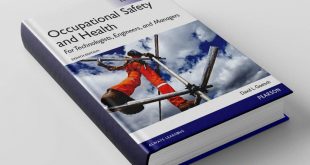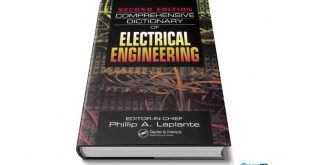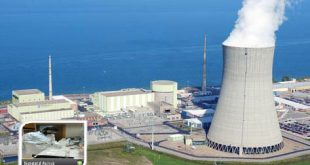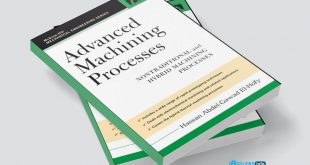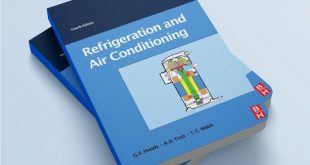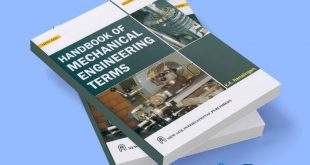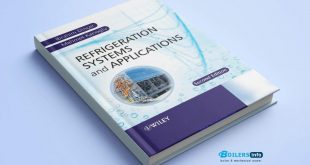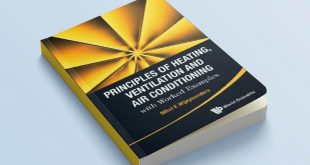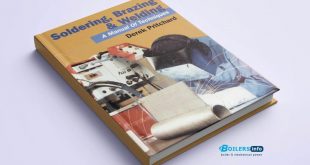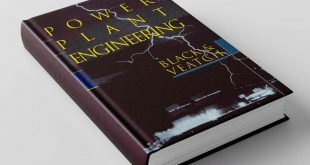Occupational Safety and Health for Technologists, Engineers and Managers 8th edition. This book was written to fulfill the need for an up-to-date, practical teaching resource that focuses on the needs of modern safety and health professionals practicing in the workplace. It is intended for use in universities, colleges, community colleges, and corporate training settings that offer programs, courses, workshops, and …
Read More »Dictionary of Electrical Engineering
Comprehensive Dictionary of Electrical Engineering 2nd edition by CRC Phillip A. Laplante. In total, more than 1500 terms were added, updated, expanded, improved, or corrected, resulting in a dictionary with over 11,000 terms and abbreviations related to electrical engineering. The dictionary is organized like a standard language dictionary except that not every word used in the dictionary is defined (this would necessitate …
Read More »Role of Chemistry in a Power Plant
Today we will discus about the role of Chemistry in a Power Plant Boiler and why it is important to maintain chemistry in the power plants. As we know much of the equipment is made of metals that are expected to have a long life in power stations with little or no failure. Experience has taught us that metals are subject …
Read More »The Australian welding Guide
The Australian welding guide The Ultimate Welding Reference Guide. Book Designed as a portable reference tool for welding engineers, design and costing personnel, workshop supervisors, welding specialists, and students, the Technical Reference Section incorporates the information welding professionals need to have on hand. The Contents of Australian welding Guide Introduction ELECTRODES General Purpose Electrodes – Mild Steel Hydrogen Controlled Electrodes Iron …
Read More »Advanced Machining Processes
Advanced Machining Processes (Nontraditional and Hybrid Machining Processes) by Hassan El-Hofy. This book provides a comprehensive reference for nontraditional machining processes as well as for the new hybrid machining ones. It is intended to be used for degree and postgraduate courses in production, mechanical, manufacturing, and industrial engineering. It is also useful for engineers working in the field of advanced machining technologies. …
Read More »Refrigeration and Air Conditioning 4th Edition
Refrigeration and Air Conditioning 4th Edition by G F Hundy – A. R. Trott – T C Welch. Book provides us an up-to-date appreciation of the issues involved in the refrigerant choice, efficiency, load reduction, and effective air conditioning. Managing heat energy is going to be crucial in the UK’s quest to reduce carbon emissions and managing heat rather than …
Read More »Learning from Accidents Book
Learning from Accidents Third edition Book by Trevor Kletz. This book deals mainly with accident investigation and the need to look beyond the immediate technical causes for ways of avoiding the hazards and for weaknesses in the management system. The other book, as the sub-title indicates, shows how accidents are forgotten and then repeated, and suggests ways of improving corporate …
Read More »Handbook of Mechanical Engineering Terms pdf
Handbook of Mechanical Engineering Terms PDF by K. K. Ramalingam. This handbook has been prepared to meet the need for up-to-date knowledge, it presents a brief description of the most important currently used Mechanical engineering terms with full understanding and background of the meaning of the words. Book is available as in the general ready reference for the students and …
Read More »Refrigeration Systems and Applications
Refrigeration Systems and Applications by İbrahim Dinçer. The book has improved and enhanced content on several topics, particularly in advanced refrigeration systems. It now includes study problems and questions at the end of each chapter, which makes the book appropriate as a textbook for students and researchers in academia. More importantly, it now has comprehensive energy analyses presented in several …
Read More »Principles of Heating Ventilation and Air Conditioning
Principles of Heating, Ventilation and Air Conditioning with Worked Examples by Nihal E. Wijeysundera. Courses in Heating, Ventilation, and Air Conditioning (HVAC) are usually offered in departments of mechanical engineering, civil engineering, architecture, and building science. This book is written mainly with the interests of students and instructors in these departments in mind. However, a significant part of the contents …
Read More »Soldering, Brazing & Welding A Manual of Techniques
Soldering, Brazing & Welding A Manual of Techniques by Derek Pritchard. Soldering, Brazing & Welding is an ideal manual for anyone requiring comprehensive advice and instruction in these common forms of metalwork. Their applications are now increasingly widespread in the craft of metalwork, as well as Soldering, Brazing & Welding. Table of Contents Soldering, Brazing & Welding A Manual of Techniques 1 What is Welding …
Read More »Power Plant Engineering by Black Veatch
Power Plant Engineering by Black & Veatch. The book will find use as a university textbook, as a technical reference, and as a comprehensive handbook and guide to the numerous technologies that are necessary components of the electric power industry. The electric power generation and distribution industry has evolved during almost exactly one century into its present form. Power Plant Engineering by …
Read More » Boilersinfo Boiler and Mechanical Power Digital Library
Boilersinfo Boiler and Mechanical Power Digital Library
